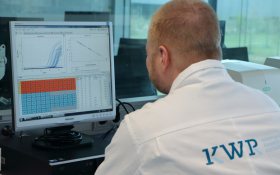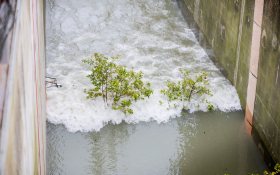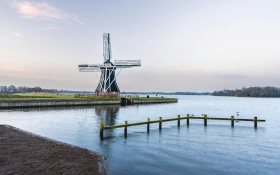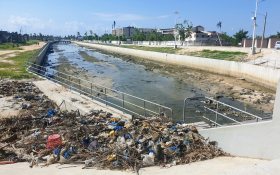Water Footprint Network and C&A join efforts to improve water sustainability of textile supply chain
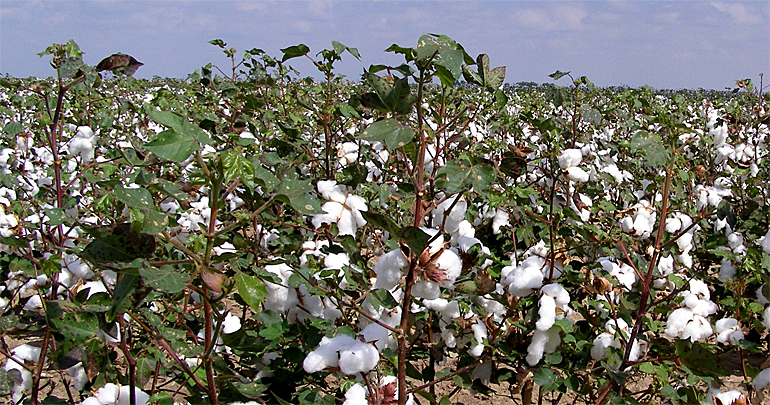 The C&A Foundation, the fashion company C&A, and the Water Footprint Network (WFN) have published two new studies on the sustainable use of water, and on C&A’s own water footprint along the international value chain for the manufacture of cotton products.
The C&A Foundation, the fashion company C&A, and the Water Footprint Network (WFN) have published two new studies on the sustainable use of water, and on C&A’s own water footprint along the international value chain for the manufacture of cotton products.
The studies identify the water use hot spots that arise during textile manufacturing, such as excessive use of water, or the use of environmentally harmful processes.
On the basis of the studies’ results, C&A Foundation, C&A and the Water Footprint Network have agreed on a new three-year programme to further reduce the company's water footprint.
Cotton cultivation: conventional versus organic 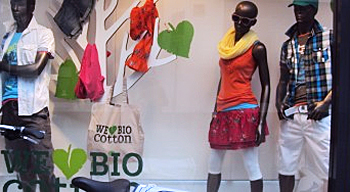 part of its CSR strategy, C&A particularly wanted to examine and compare the levels of harmful pollutants that are released into the environment – specifically into fresh water – during conventional and organic cotton cultivation.
part of its CSR strategy, C&A particularly wanted to examine and compare the levels of harmful pollutants that are released into the environment – specifically into fresh water – during conventional and organic cotton cultivation.
The Water Footprint Network’s 'grey water footprint' served as an indicator for the level of water pollution from 480 farms in India. The studies showed that with conventional cultivation, the grey water footprint of cotton is about five times larger than if an organic method of cultivation is used.
A primary contributor to the bigger water footprint was the use of chemical pesticides on conventional farms.
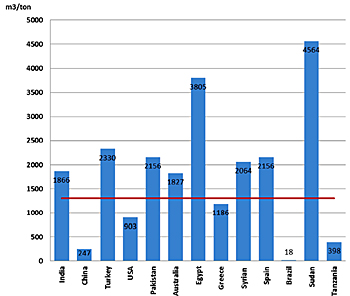
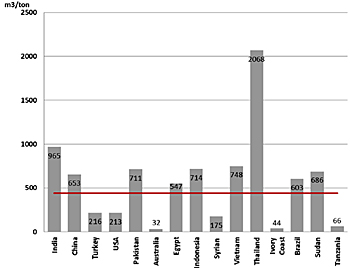 C&A's grey water footprint in Thailand is higher than the global average (red line) and should be targeted.
C&A's grey water footprint in Thailand is higher than the global average (red line) and should be targeted.
Guidelines for cotton farmers
"These studies have provided us with valuable insights that will help us to further reduce our water footprint along the entire value chain," says Phil Chamberlain, Head of Sustainable Business Development and Board Member of C&A Foundation. "To this end, we are developing mandatory guidelines, instruments and trainings for our partners, cotton farmers and factory workers.
Furthermore, C&A plans to work with other stakeholders and draw up possible solutions for pressing environmental issues, in order to achieve an overall improvement of water conditions worldwide."
Improved farming practices
C&A has understood from the start that sustainable apparel requires a sustainable supply chain and that the amount of water consumed and polluted, the water footprint of the supply chain, must be reduced to sustainable limits", said Ruth Mathews, Executive Director, Water Footprint Network. "With the help of the Water Footprint Network, C&A has taken on the daunting task of working with its suppliers to improve practices and reduce environmental impacts. These studies confirm the benefits of a move to organic cotton and shows that the water andof conventional farming can be reduced through improved farming practices."
Tradition of sustainability
Sustainability has a long-standing tradition at C&A, and has been an integral part of corporate management for over 20 years. In producing its clothing using environmentally friendly technologies, the fashion company is aiming to better control factors such as water consumption and treatment, or CO2 emissions.
About C&A Foundation
C&A Foundation, a charitable foundation based in Switzerland, aims to improve social, economic and ecological conditions along the cotton and apparel value chain.
With over 1,550 stores in 20 European countries and more than 37,500 employees C&A Europe is one of the leading fashion retail businesses in Europe. C&A Europe is an enterprise of Cofra Holding AG.
About Water Footprint Network
Water Footprint Network was founded in 2008 by the University of Twente, WWF, UNESCO-IHE, World Business Council for Sustainable Development, International Finance Corporation, Netherlands Water Partnership, and Water Neutral Foundation.
The organization’s mission is to promote the transition towards sustainable, fair and efficient use of freshwater resources worldwide by advancing the concept of the water footprint and its application through Water Footprint Assessment.
The two reports:
- Grey Water Footprint Indicator of Water Pollution in the Production of Organic vs. Conventional Cotton in India [download]
- C&A's Water Footprint Strategy: Cotton Clothing Supply Chain [download]
This news item was originally published (as a pdf-file) on the website of Water Footprint Network.
More information
Water Footprint Network
Enschede, Netherlands
+31 53 489 43 70
www.waterfootprint.org
